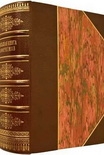Helgoland, Rovelli, Erica [black authors fiction txt] 📗

Book online «Helgoland, Rovelli, Erica [black authors fiction txt] 📗». Author Rovelli, Erica
Physics seemed to me the place where the weave between the structure of reality and the structure of thought was closest, the place where this intertwinement was subject to the incandescent test of continuous evolution. The journey undertaken has been more surprising and more of an adventure than I expected. Space, time, matter, thought, the whole of reality has redesigned itself before my eyes, as in some vast kaleidoscope. Quantum physics, more than the immensity of the universe and the discovery of its great history, more even than the extraordinary vision of Einstein, has been for me the heart of this radical questioning of our mental maps of reality.
The classical vision of the world, to adapt Taine’s phrase, is no longer a confirmed hallucination. The fragmentary and insubstantial quantum world is, for the moment, the hallucination most in harmony with reality . . .
There is a sense of the vertiginous—of freedom, happiness, lightness—in the vision of the world that we are offered by the discovery of quanta. “You do look . . . in a moved sort, / As if you were dismay’d: be cheerful . . .” In the end, the youthful curiosity that drew me toward physics, like a child following a magic flute, has led me to finding more enchanted castles than I could have dreamed of. The world of quantum theory that I have attempted to describe, opened by a young man’s journey to the Sacred Island in the North Sea, seems extraordinarily beautiful to me.
Of Helgoland—that extreme, wind-battered place—Goethe had written that it was one of those places on Earth that “exemplifies the endless fascination of Nature.” And that on the Sacred Island it was possible to experience the “world spirit,” the Weltgeist.137 Who knows, perhaps it was this spirit that spoke to Heisenberg, helping him clear a little of the fog from our eyes . . .
Every time that something solid is put into doubt or dismantled, something else opens up and allows us to see further than we could before. Watching what appeared to be as solid as rock melt into air makes lighter, it seems to me, the transitory and bittersweet flowing of our lives.
The interconnectedness of things, the reflection of one in another, shines with a clear light that the coldness of eighteenth-century mechanism could not capture.
Even if it leaves us astonished. Even if it leaves us with a profound sense of mystery.
Acknowledgments
Thanks to Blu. To Emanuela, Lee, Časlav, Jenann, Ted, David, Roberto, Simon, Eugenio, Aurélien, Massimo, Enrico, for a thousand things. To Andrea for his valuable comments on a first draft of the book; to Maddalena for making these lines readable; to Sami, with nostalgia, for his support and his friendship; to Guido for having shown me the path of my life; to Bill for having been the first to listen to these things fifteen years ago; to Wayne for his insight; to Chris for his hospitality; to Antonino for the wonderful suggestions. To my father for teaching me what it means to still be there when you are no longer there. To Simone and Alejandro for having made, together, the most beautiful research group in the world. To my fantastic students, to my colleagues in physics and philosophy with whom I have discussed the issues in this book over the years, to my marvelous readers. To all of these people, who together weave the magic net of relations of which this book is a thread.
Thanks, above all, to Werner and Aleksandr.
NotesI. A STRANGELY BEAUTIFUL INTERIORThe Absurd Idea of the Young Heisenberg: Observables
1. This and subsequent quotations from Heisenberg are taken, with minimal adaptation, from Werner Heisenberg, Der Teil und das Ganze (Munich: Piper, 1969).
2. Niels Bohr, “The Genesis of Quantum Mechanics,” in Essays on Atomic Physics and Human Knowledge 1958–1962 (New York: Wiley, 1963), 74–78.
3. Werner Heisenberg, “Über quantentheoretische Umdeutung kinematischer und mechanischer Beziehungen,” Zeitschrift für Physik 33 (1925), 879–93.
4. Max Born and Pascual Jordan, “Zur Quantenmechanik,” Zeitschrift für Physik 34 (1925), 858–88.
5. Paul Dirac, “The Fundamental Equations of Quantum Mechanics,” Proceedings of the Royal Society A 109, no. 752 (1925), 642–53.
6. He realizes that Heisenberg’s tables are noncommutative, which makes him think of the Poisson brackets that he had encountered in an advanced mechanics course. A delightful account of these fateful years, in the voice of a seventy-three-year-old Dirac, can be found at https://www.youtube.com/watch?v=vwYs8tTLZ24.
7. Max Born, My Life: Recollections of a Nobel Laureate (London: Taylor and Francis, 1978), 218.
8. Wolfgang Pauli, “Über das Wasserstoffspektrum vom Standpunkt der neuen Quantenmechanik,” Zeitschrift für Physik 36 (1926), 336–63, a triumph of virtuoso technique.
9. Cited in F. Laudisa, La realtà al tempo dei quanti: Einstein, Bohr e la nuova immagine del mondo (Turin: Bollati Boringhieri, 2019), 115.
10. Albert Einstein, Corrispondenza con Michele Besso (1903–1955) (Naples: Guida, 1995), 242.
11. Bohr, “The Genesis of Quantum Mechanics,” 75.
12. In Dirac’s terms: q-numbers. In more modern terms: operators. More generally: variables of the noncommutative algebra defined by the equation discussed in the next chapter.The Misleading ψ of Erwin Schrödinger: Probability
13. W. J. Moore, Schrödinger, Life and Thought (Cambridge, UK: Cambridge University Press, 1989), 131.
14. Erwin Schrödinger, “Quantisierung als Eigenwertproblem (Zweite Mitteilung),” Annalen der Physik 384, no. 4 (1926), 489–527.
15. That is to say, inverting the eikonal approximation.
16. Erwin Schrödinger, “Quantisierung als Eigenwertproblem (Erste Mitteilung),” Annalen der Physik 384, no. 4 (1926), 361–76. At first he had written the equation relativistically and was convinced that it was wrong. Then he





Comments (0)